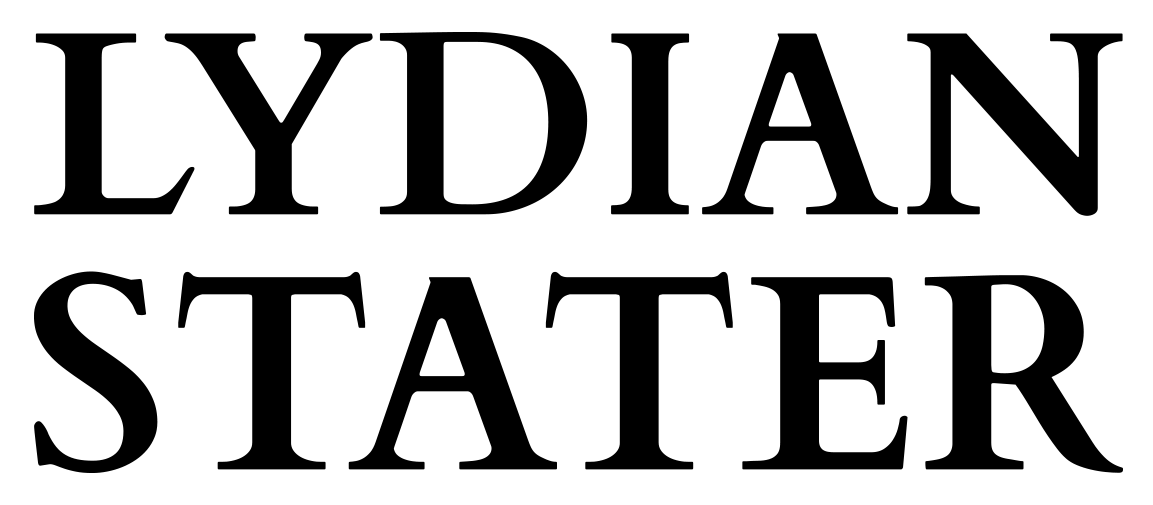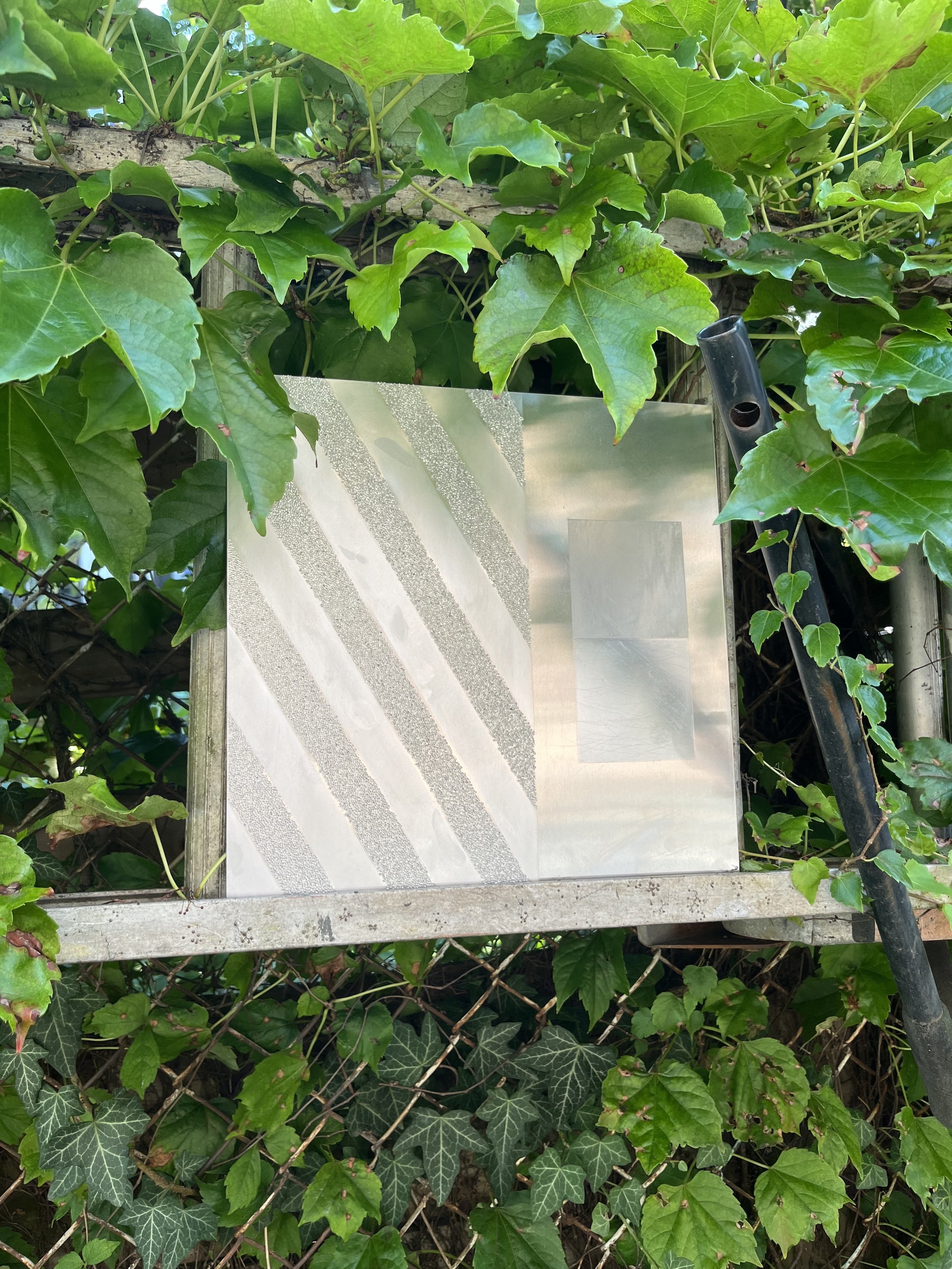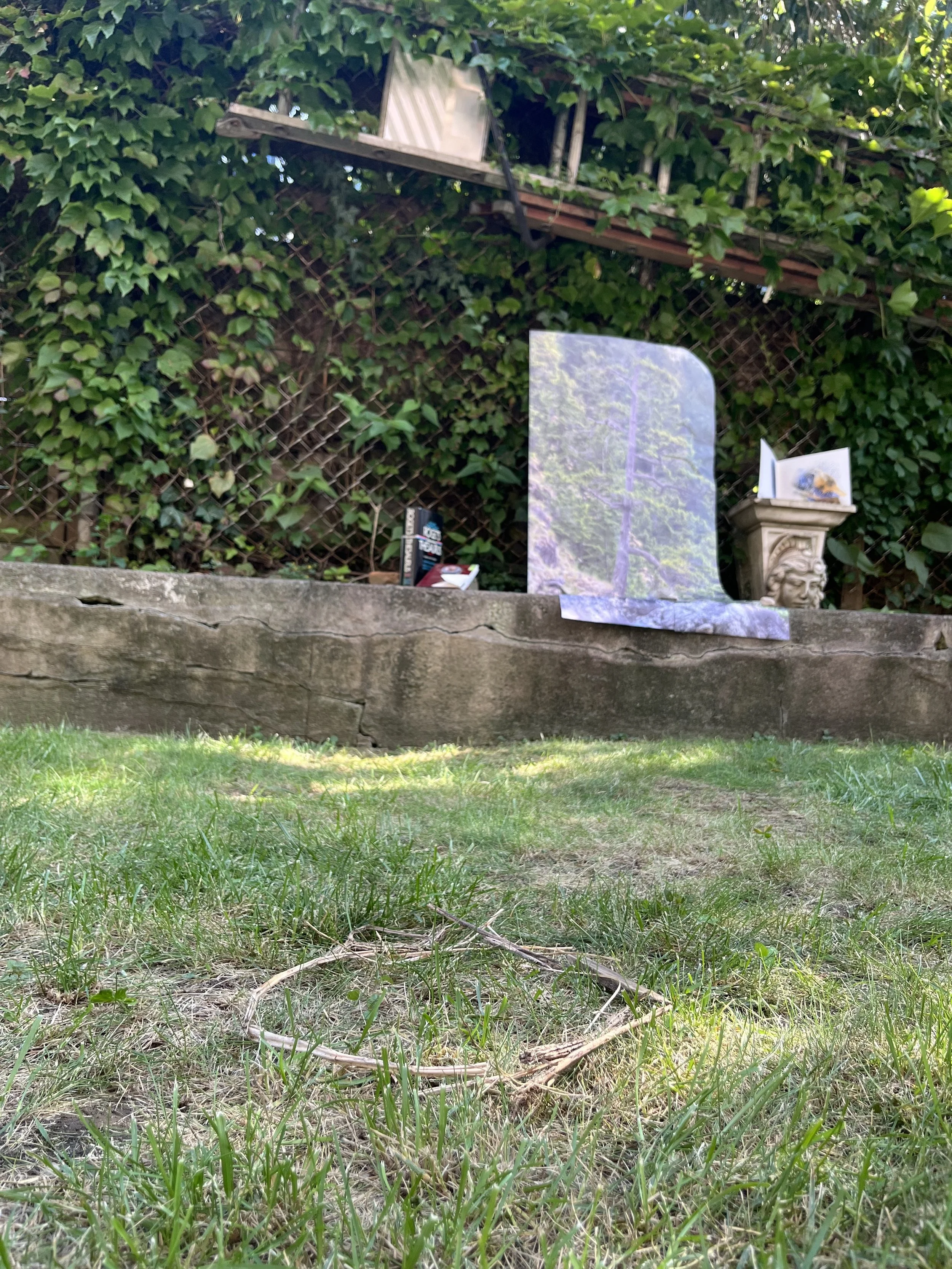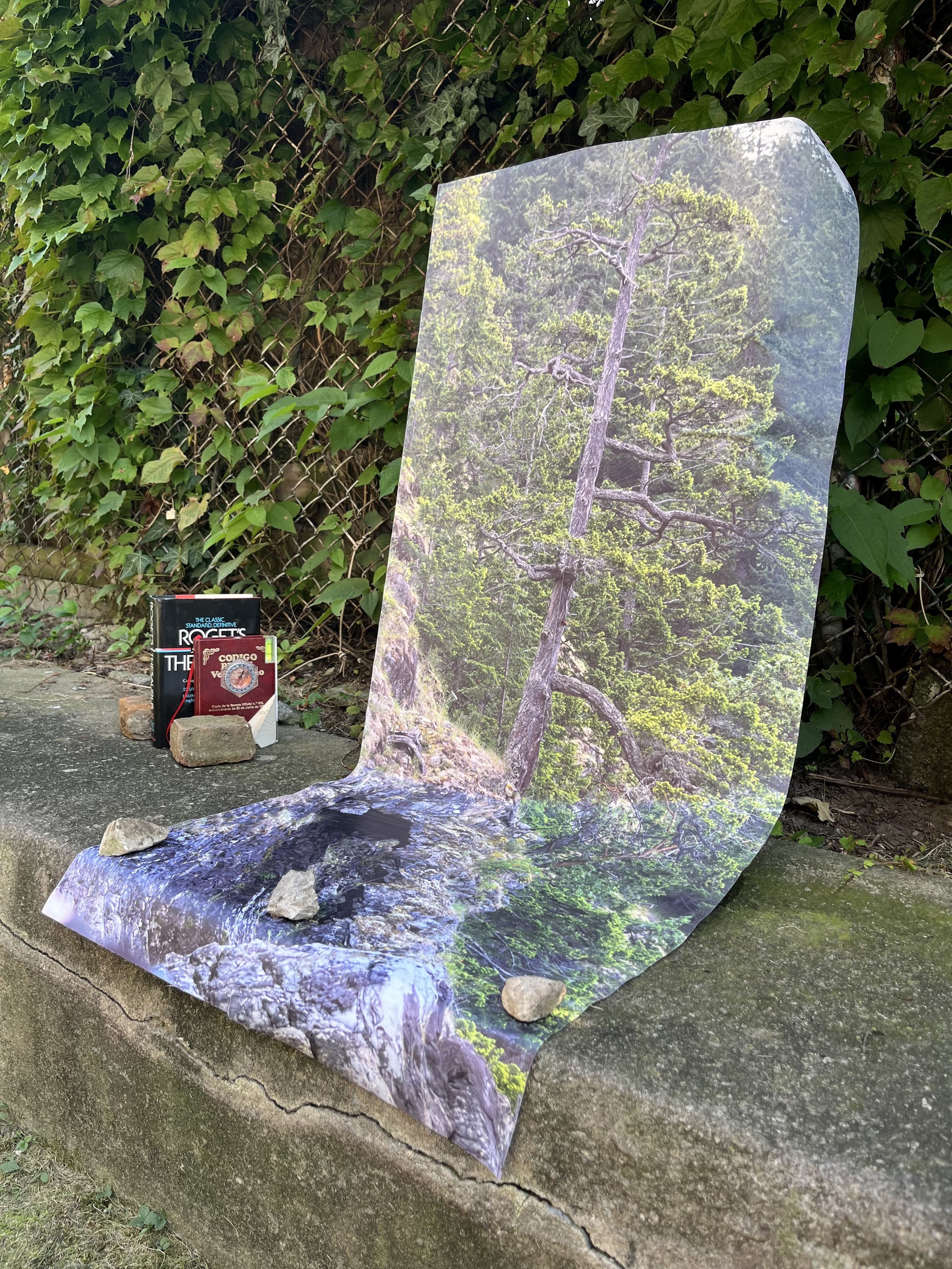Portmanteau | Vol. 1
Bel Falleiros + Renata Cruz | Jason File | Eleanor King | Anika Todd | wei
July 16 - September 13, 2024
Opening Reception 7/16 from 7-9pm
Chapel Bar (277 Park Ave S, NYC)
Lydian Stater is excited to present the first volume of Portmanteau, a publication/exhibition fusion. Drawing inspiration from the large traveling suitcase used in the 16th-century to carry cloaks and the later Lewis Carroll adaptation as the linguistic term for a word blend, Portmanteau is a one-of-a-kind, editioned, flexible, and mobile exhibition.
Encased in a 12x12-inch suitcase, Portmanteau is not confined to a specific medium and relies on the work's ability to expand its physicality––at times literally, but also by implicating viewers through actions and reflections. We believe that our community and the artists that compose this volume are the result of nurtured relationships, connections, and perhaps, also, fate. We arrived at this group not by focusing on artistic themes, but from the intuition of what each might create with the unique and specific constraints that Portmanteau requires. The resulting works, although reflective of their individual practices, came to be full of coincidence. In this volume, many of the artists point to things that are not visible at a simple glance, to eroded spaces, hidden symbolisms, and inherent material qualities, while evoking concepts of alienation and integration (or wholeness).
Printed on removable vinyl, Eleanor King’s On the edge (2024) is meant to embed within the architecture a space. Inevitably becoming less adhesive as it travels to each venue, this work paradoxically brings the outside –nature and remnants of other spaces– to the inside while evoking the logging industry affecting British Columbia and other parts of the world.
In Night Blossom (2024), Bel Falleiros and Renata Cruz propose their own blend of words and ideas through a double drawing that the artists concurrently made while having a virtual conversation. This drawing coincidentally (or kismetically) was about the same subject: darkness –as starting and finishing point, as repository/vessel, as the environment for sprouting, and container of multitudes and life.
In a 12 x 12 aluminum sheet, wei evokes street signs to explore feelings of alienation and disorientation. Untitled (Signs) (2024) renders the ways in which signs and street symbols can act contrary to their intended purpose, othering and disconnecting rather than orienting individuals. wei’s work is seemingly quiet on the surface but in actuality is full of interactions through its reflective materials and luminescent geometries.
Through a way-finding device inlaid within a used book using a compass, level, and lamp, Anika Todd’s Honor Log (2024) makes visible the direction of the previous location of the work, connecting the iterations of the exhibition, and hosts, to one another spatially. A drawn or taped circle identifies this direction and creates an invisible line that maps the work’s travel.
Composed of a used English language thesaurus, corporate law firm office supplies, a used book store price sticker, and an artist inscription, Treasury (Lexicon) (2024) by Jason File questions the power and meaning of words by exploring “the impossibility to truly define things without a reference to other things.” Coincidentally, in an inscription added by the artist he further complicates this concept through a conversation between Humpty Dumpty and Alice, pulled from Lewis Carroll’s Through the Looking Glass where the blended word meaning of portmanteau first appears.
With Portmanteau, our aim is to foster and expand our community by connecting people, making art more accessible, and creating a network that extends beyond the gallery and the artists, while continuing to rely on the coincidental nature of life and art and the ways in which we are brought together. Portmanteau relies on those who are loaned the works to install and document the exhibition in a space of their choosing while making connections with the following loanee. This approach continues to challenge the traditional notions of the art market, exhibition spaces, and most notably, the roles that our community can hold within this ecosystem.
Bel Falleiros is a Brazilian artist whose artistic research focuses on land identity. Beginning in her home city of São Paulo, she worked to understand how contemporary landscapes, city tissue, and its monuments (mis)represent the diverse layers of presence that constitute a place. Since arriving in the United States, she has worked closer with the land, creating space for grounding and exploring the stories and symbols that can unite us. Renata Cruz seeks to create open and non-linear narratives, where diverse visions, voices, and other manifestations of life are present. She appropriates clippings from literary texts, listens to personal stories, and organizes them with collected images and other fragments of the world. In addition to her studio practice, she participates in collaborative projects that connect art, education, and autonomous thinking. Jason File is a lawyer and artist who embeds law into his art practice and art into his legal practice to explore the poetics of juridical language and materials. In the art world, this takes the form of performances, videos, installations and objects. In the legal world, he calls this testimony, evidence, contracts and administration. In both worlds it is an archive. Eleanor King is an artist and educator whose interdisciplinary practice includes painting, video, sound, and sculptural installation. This work responds to physical, social, and economic landscapes and it is often responsive and collaborative. Concerned with the impact capital has on our lands and politics, her work often focuses on the effect that human-built infrastructure has on the environment through a decolonial lens. Anika Todd’s work investigates Western principles of property that authorize ownership of earth and sky. Reaching into the air and below the ground, Todd uses sculpture and video to reconfigure materials and imaging techniques historically used for surveillance and control of public space, repurposing them for collective/playful use. wei works with print media, video, sound, design, and movements to render the experience of the Otherness. Mapping Queerness and Foreignness are the topics they often research and express. wei investigates the betwixt & between under the homogenous timeline & ephemeral togetherness to trace the imprints by contextualizing one’s and one’s collectiveness present.






























































